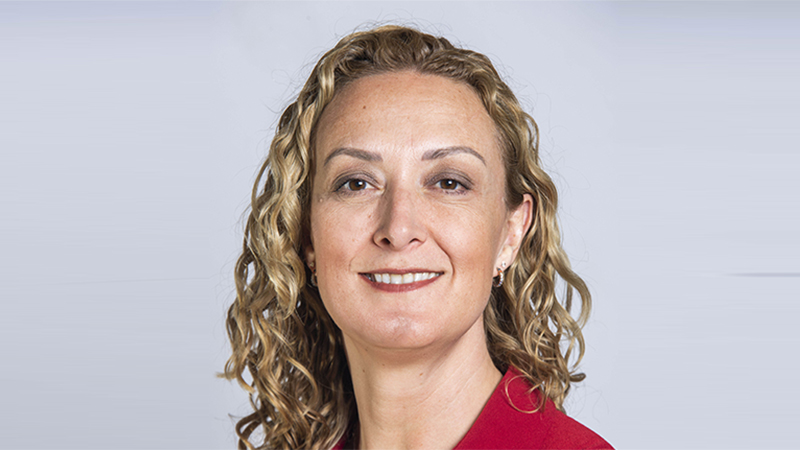By Hannah Bernard, head of business banking at Barclays
It is time to change the funding system. Last year, women only received 2% of venture capital funding in Europe and the United States – the lowest amount since 2016.
This issue is not new – female founders have always struggled to access their equal share of investment – but it is about time we stopped looking at the ‘why’ and started driving action to ensure this history changes.
This should begin with looking at the structures in place and the framework that allows this to happen. We know that women back women – female venture capitalists (VCs) invest in twice as many female-founded start-ups as their male counterparts – so if VC teams have less capital to deploy, this naturally leads to reduced ability to deploy that capital into as many female-powered businesses.
A recent report found that all-male run VC funds raised around ten times more capital than all-female run funds and almost five times more capital than mixed-gender-owned funds between 2017 and 2023. The result of this is not inconsequential.
That is not to say that no male-led VCs invest in businesses founded by women – some women are very good at asking men for money. It is, however, part of a wider systemic problem.
If we want to unlock billions of pounds for the UK economy and drive better return for both VCs and for LPs, we need to address the problem at its source.
A strategic imperative
According to research from Harvard Kennedy School, the fundamental structure of the VC industry perpetuates inequalities. VCs which have historically been run by men, with low-staff turnover, rely on networks to make business decisions.
Today, the industry remains heavily male dominated – only 12% of fund managers in the UK are female.
Women are naturally less inclined to network and ask outright for money or help than men. This coupled with the fact that men are more likely to back other men due to internal biases and shared social and professional networks leads to the systemic inequalities that we observe in today’s VC industry.
Indeed, this is reflected in many female founders’ lived experiences. Amy Nauiokas, Founder, Group CEO and General Partner at Anthemis, said: “Despite women’s proven ability to generate outsized returns and faster exits, women entrepreneurs face systemic underfunding that hamstrings the entire financial ecosystem.
“The staggering market potential of female founders is being gravely undermined by deep-rooted biases. Channelling capital into funds led by women investors is crucial for injecting vital diverse perspectives into the financial system.”
As Amy points out, not only are women not getting funding into their businesses, but funds are missing out on potential returns.
Research from BCG and Mass Challenge found that women-led companies generated 35% higher return than men-led companies. The evidence in favour of funding early-stage female businesses never runs out.
Another report by the European Women in VC network showed that the financial performance of European VC funds increases with higher representation of women in senior management teams. VC funds managed by mixed teams also show a higher annual internal rate of return and lower levels of volatility on their portfolios.
The industry needs to radically rethink how investment opportunities are evaluated and how their teams are constructed.
Driving change at the top
Some UK-based female-run VCs are already taking action. Alma Ventures, Angel Academe, Pink Salt Ventures and dozens more are working tirelessly to empower women in the industry and close the funding gap, and Barclays Principal Investments led the first and anchor LP allocation in the Female Innovators Lab Fund.
It is a $50m vehicle, managed by Anthemis, dedicated to investing in fintech companies with at least one female founder. It is the largest early stage fintech fund led by a completely female team, focused solely on female-led teams, and provides access to mentorship and business connections, as well as the wider Barclays ecosystem.
But leaving them to solely lead the charge will inevitably have its limits – they cannot do it alone. Female VCs themselves need more capital and to do that we need to go straight to the top of the funding chain.
This means having conversations with institutional investors, like pension funds, to get their buy-in and ensure they think strategically about making allocation decisions that support female-led VCs.
In the same way the Mansion House reforms will help drive allocation for unlisted equities, there is no reason we cannot encourage more to female VC funds and therefore more female powered businesses.
Helping drive this change is why the Invest in Women Taskforce was founded. It is industry led, and government backed as that is the only way we can enable a new age of public and private sector collaboration that amplifies the public offering into female VC funds. In turn, this will also stimulate more private investment to create the deeper, structural change we desperately need.
By expanding female-led VC communities, highlighting successful VC funding for female businesses and confronting stereotypes, we can push more funding into female-powered companies.
In the end, this is not just about equal access to capital. It makes financial sense for women entrepreneurs, VCs, institutional investors, and the economy as a whole.















